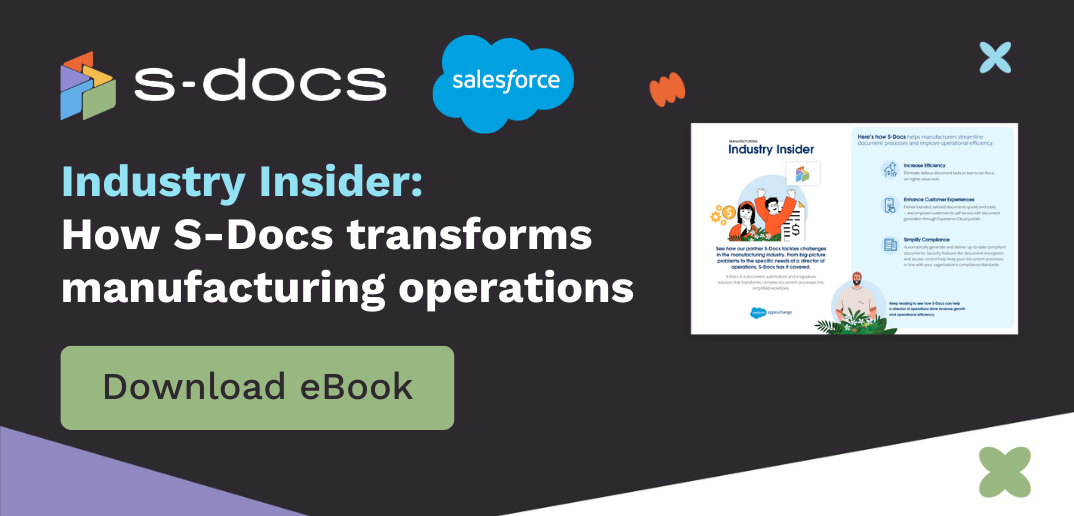Innovator's Guide: Developing a Customer-Centric Operating Model
When your business prioritizes customers’ needs and preferences, you make deeper connections that lead to happier customers who are more likely to buy again. Putting the customer at the heart of every decision your organization makes represents a business-wide shift away from centering on your products to understanding and meeting the needs of your customers at every touchpoint. Using technology to create customer-centric digital transformation is key to fostering brand loyalty and driving sustainable growth.
What is a Customer-Centric Operating Model?
A customer-centric operating model is a strategic approach where a company designs its processes, culture, and technology around the primary objective of delivering exceptional customer experiences.
This model shifts the organization's attention to delivering customer satisfaction throughout the entire customer journey. This process requires a deep understanding of customer preferences, expectations, and behaviors, and aligns internal processes to meet those needs effectively.
What Is the Impact of Customer Centricity?
When you concentrate on delivering comprehensive solutions that address the customer’s specific problems and requirements, it can have a profound impact. Some key benefits of a customer-centric operating model include:
- Enhanced Customer Experience: When you put customers at the center of your operations, you focus on what genuinely matters most to your clients. This enables you to exceed their expectations, foster loyalty, and establish long-term relationships based on trust and satisfaction.
- Increased Customer Loyalty: A customer-centric approach puts you in a position to build strong relationships with clients, reducing customer churn and increasing retention.
- Increased Business Profitability: Customers that receive value-enhanced customer service during their purchase have an 86% likelihood of purchasing again, and a 75% chance of spending more, creating a direct impact on your business’s bottom line.
- Competitive Advantage: Adopting a customer-centric approach differentiates you more uniquely from your industry peers who use a product-centric approach — giving you a competitive advantage.
- Improved Brand Reputation: Prioritizing customers increases their respect for you, enhancing your reputation while driving positive word-of-mouth referrals.
Customer Centricity Examples
Let’s look at a few companies that are remarkable examples of customer-centricity:
- Amazon: With its user-friendly interface, personalized recommendations, and efficient customer service, Amazon is a prime example of customer-centricity in the e-commerce space. Amazon uses data analytics tools to offer personalized recommendations based on individual purchase history. Its revolutionary "one-click order" functionality and commitment to fast delivery services amplify the customer experience.
- Apple: Apple has always been about the users. The company has a relentless focus on user experience, design, and improving devices with new features, while its customer service has made it a leading brand in the technology sector.
- Zappos: Zappos prioritizes customer satisfaction above all, offering free returns and 24/7 customer support. This approach led to positive word-of-mouth marketing and impressive loyalty rates, giving them a sustainable competitive advantage over some major brands.
- Netflix: Netflix disrupts traditional broadcasting methods through custom viewing experiences designed around viewer tastes and habits. The entertainment service provider has made significant investments in advanced algorithms that predict high-quality suggestions tailored to each subscriber’s genre preference or viewed content. In addition, Netflix strategically creates original series based on collected data insights about user preferences which keeps their audiences hooked.
There are many other excellent customer centricity examples, but these four have truly proven the theory.
How to Implement a Customer-Centric Operating Model
Transforming your business into a customer-centric company means overhauling various business elements including strategy, culture, operations, and technology. To create a customer-centric operating model, organizations should follow these key steps:
1. Analyze Your Customers’ Needs and Preferences
Start by collecting and analyzing customer data, including surveys, feedback, and behavioral analytics. Ask them what they like or dislike about your product, and what they’d like changed, to understand your customers' pain points, preferences, and expectations. This data forms the foundation for your customer-centric strategy.
2. Use Insights to Outline a Strategy
Develop a clear strategy based on the insights gained from customer data. Look at the data to identify patterns, trends, or key insights into customer pain points, desires, and buying behaviors. Identify areas where you can improve the customer experience so you can tailor your product and personalize your customer service to fit your customers’ desires. Implement changes, and continue to monitor customer feedback for further opportunities.
3. Build a Customer-Centric Internal Culture
Your internal culture is a powerful place to start communicating the importance of customer satisfaction to every employee and embedding it in your organization's values. Hire and train employees in the culture, and implement awareness programs to help your employees understand and embrace this culture.
4. Operationalize for Quality and Service
Reengineer your processes to prioritize customer relationships, service, and quality. Ensure that all departments, teams, and processes align with your customer-centric strategy, including streamlining workflows and eliminating bottlenecks to provide a better customer experience.
5. Invest in Automation
Leverage technology to enhance efficiency and personalization. Innovative tools like document automation solutions can provide your customers with consistent, high-quality service, and personalized customer interactions with your team, while customer portals make it easier to communicate directly with customers. Using AI and machine learning can also give you the tools you need to run predictive analytics that show you how to increase customer engagement.
Get Started with Customer-Centric Digital Transformation
What is the impact of customer centricity? Well, 94% of customers say their decision to buy from a company again depends on the service they received. Technologies such as customer relationship management (CRM) systems, data analytics tools, and omnichannel support help you cater to customer needs effectively, providing a problem-free experience.
The customer-centric operating model is not a one-time initiative but an ongoing commitment to understanding and serving your customers better. By implementing the steps outlined in this guide, and following the customer centricity examples we’ve shared, organizations can create a culture that places customers at the forefront, delivering exceptional experiences, and ultimately gaining a competitive edge in the market.
S-Docs can help your organization’s transition to a customer-centric operating model. We automate document generation, distribution, and signing so your customers can get what they need without delay. If you’re ready to embrace customer-centricity — and the benefits that come with it — request a demo today.







